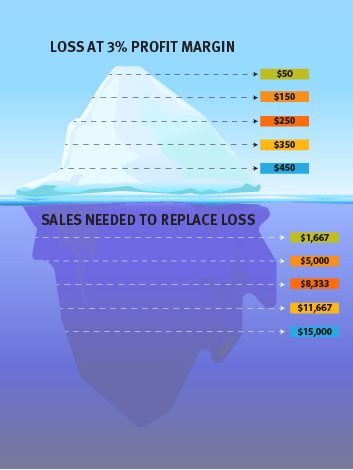If a retail business wants to improve profitability, they typically focus on the revenue side. But other retail cost-cutting strategies may create more meaningful results which deliver longer-lasting benefits.
Strategically cutting costs typically involves making businesses more efficient, so as revenues grow, profitability also increases. In addition, cost-cutting frees up resources so the business can invest in further improvements and growth opportunities.
Retail cost-cutting strategies cover broad ground
All businesses have costs, but not all costs are created equal. When considering where to make reductions in costs, it helps to divide costs into three main categories:
- High-value costs are investments in the company’s value and capabilities, allowing the company to better serve customers and add profitable new business.
- Good costs are a normal, unavoidable part of doing business and fit it with the company’s overall strategy.
- Poor costs are those which do not fit with the strategy, are avoidable, and often unexpected.
Each company is different, so what costs are good versus poor will vary by company and industry. Once you’ve categorized costs, the next step is finding ways to reduce or eliminate the poor costs.
Loss prevention can trim costs
Companies lose a significant amount of money to various types of profit losses. While many retail businesses immediately think of shoplifting, other activities may even have a great impact on the bottom line.
Employee theft is an excellent example, especially when considering how to replace the lost revenue.
EXAMPLE
If your company operates on a 3 percent profit margin and an employee steals $350 from you, it will take $11,667 in additional sales to recoup that loss.
Loss doesn’t have to involve outright theft, either. Employees who offer excessive discounts can hack away at your profits. So can excessive returns and refunds.
By using strategies to address each of these preventable factors, you can cut your costs. Changes could include improving customer service and crafting stricter procedures to lower return rates.
Cost factors you may not have considered
Waste Not, Want Not
Waste is a big loss factor for many businesses.
At restaurants, improperly prepared customer orders have to be thrown away and replacement meals prepared.
In a retail setting, waste can be found in unsellable items such as outdated inventory, invalid returns, or damaged goods.
Paying attention to operating procedures and monitoring what is thrown away may indicate practices which need to change.
Vendors
Another potential source of unnecessary loss is vendor error. Simple errors on invoicing can add up. And some vendors may even fraudulently inflate invoices, knowing audits are unlikely.
When you regularly audit vendor’s invoices and compare them to what you received, you may be surprised at how much extra you’re paying.
How technology can help you trim costs
While video surveillance is traditionally thought of as a security measure, having a camera system may also lower your insurance costs.
In addition, you can combine your video system with point-of-sale (POS) data through innovative software such as DIGIOP CARBON. That way, you can match sales activity with video, giving you a glimpse of your operational efficiency.
If a particular employee’s sales lag behind her colleagues, her sales are flagged in DIGIOP CARBON. By looking at specific transactions and watching the associated video, you may be able to spot problems in her process and use training to bring her performance back to what it should be.
The same processing can identify excessive returns, suspicious access to the cash drawers, or out-of-range metrics.
A powerful tool offering valuable insight into retail cost-cutting strategies
One way to take advantage of many of the retail cost-cutting strategies is a sophisticated analysis tool like DIGIOP CARBON, which can combine multiple elements of data and video into straightforward reports providing valuable insight into your operations.
Contact us and schedule a DEMO today!


